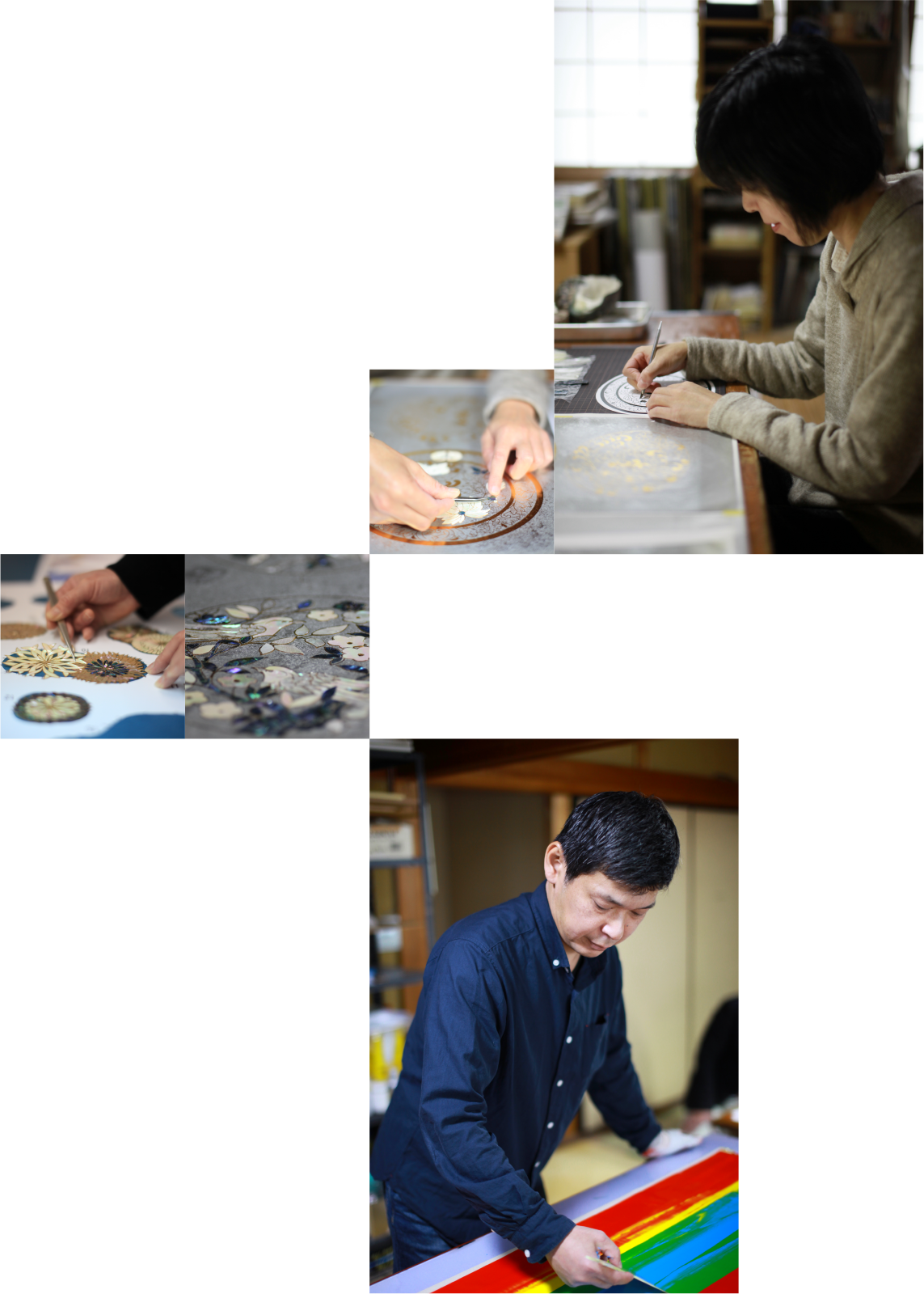Philosophy
Weaving the sea gems
“If only fabric could be woven from mother-of-pearl…” In 1977, this was the idea that consumed Katsuichiro Tamiya – a textile craftsman from Tango. After two years of dedicated research, he was successful.
The Tango region has a more than 1300-year history as a traditional center for woven silk fabrics. Tango also continues to support the time-honored Japanese traditions of the kimono.
Perhaps it could be better said that the convergence of history, environment, and traditions taught by the masters has brought the sea shell and fabric together – giving birth to this technology. We believe that it is our appointed mission to develop this technology into a legitimate tradition.

海の煌めきを織物に
「貝殻を織物にできたら」。一九七七年頃、この想いに捕りつかれた丹後の織物業者、民谷勝一郎は約二年研究に没頭し、これを現実のものとしました。
丹後地方は一三〇〇年以上に渡る絹織物の伝統産地としての歴史をもち、日本の伝統文化である着物を支えてきました。
歴史と風土、先達からの伝統が貝殻と織物を出会わせ、この技術を生んだといってもよいかもしれません。この技術や文化を確かな伝統としていくことが私たちに課せられた使命であると考えております。
The kanji character “Ra” found in “Raden” – which is a style of Japanese lacquerware – means “sea shell” and the character for “Den” means craftsmanship.
First developed as a decorative finish in Japanese lacquerware, this name, raden, has come to refer to specific technique. The raden technique and a traditional Japanese weaving method called “hiki-haku” (which can be translated as “pull-foil”) were fused and an all new methodology was created. For this new technique, mother-of-pearl is sliced into thin veneers that are laminated on handmade Japanese paper. This paper is then cut into long, very thin strips, and these strips are woven as threads for the woof to make fabric.
This represents a break from conventional concepts. The glisten and sparkle of the ocean given off by the sea shells is expressed in a flexible material.
螺鈿の螺は貝殻を、鈿は細工のことをあらわします。
日本では漆の加飾として発展し、ひとつの技法の名前として定着しました。この技法と織物伝統技法(引き箔)が融合し、新しい技術が生まれました。和紙の上に 薄く板状にした貝殻を形に切って貼りつけ、これを糸状に細く裁断したものを緯糸として織り込むというものです。
今までの概念を破り、柔軟性をもった素材として貝殻のもつ海の煌めきが表現されています。
The Tango district faces the Sea of Japan and is a region of natural scenery that retains the flavor of ancient Japan. This natural environment and climate is necessary for textile production and the temperament of the residents is passed on from generation to generation.
TAMIYA RADEN is based on inspiration from nature and techniques cultivated in a background of history and tradition. We pursue the creation of all new fabrics with a convergence of natural materials such as silk, sea shells, lacquer, wood and leather.
丹後は、日本海に面し、日本の原風景を残す自然豊かな土地です。ここでは織物に必要な自然と風土、人々の気質が脈々と受け継がれています。
民谷螺鈿は、その歴史的背景のなかで培われた技術と自然からのインスピレーションをもとに、絹糸、貝殻、漆、木、革などの様々な素材を組み合わせた織物を生み出し、常に新たなクリエーションを目指しています。
